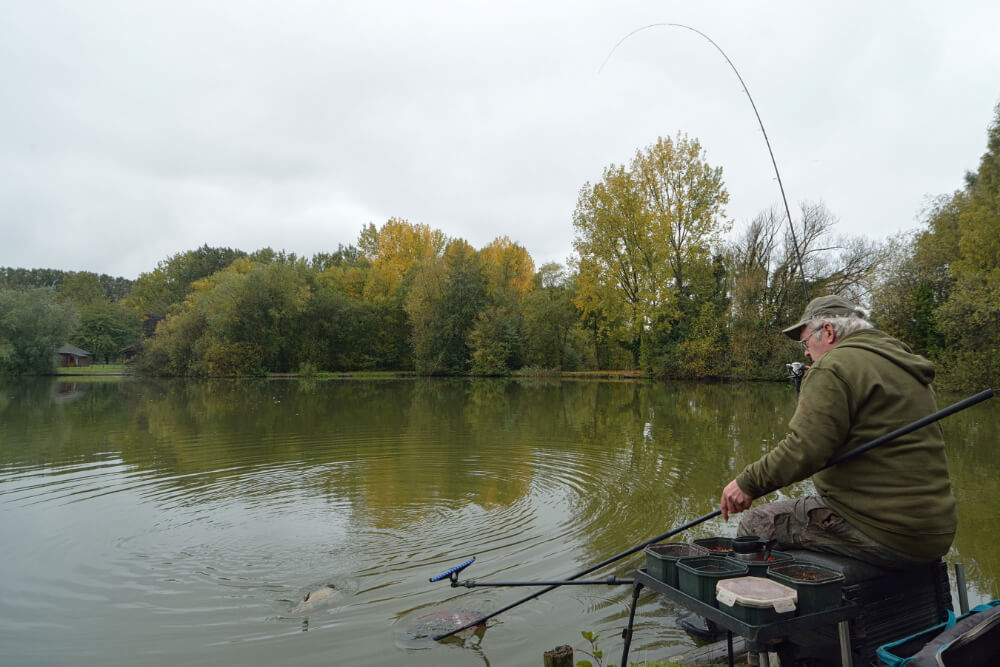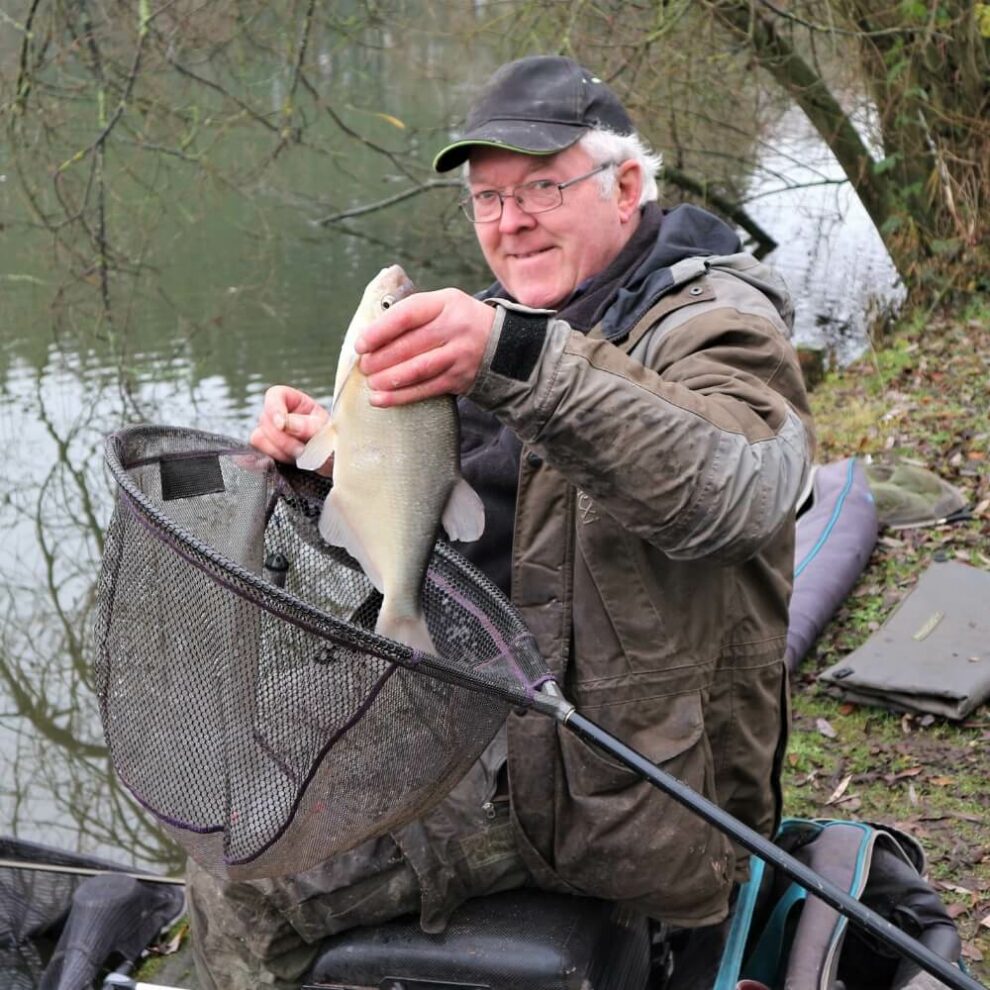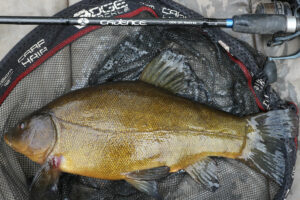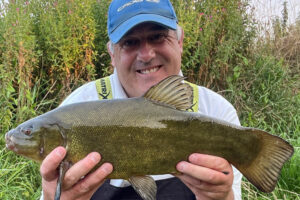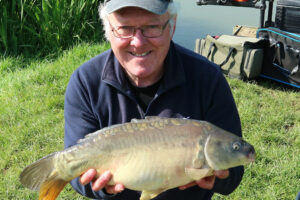New Ways
When I was living in the midlands a few years back, I noticed feeder fishing was taking an entirely new path. Any hint of being a chuck-it-and-chance-it way of doing things was dead and buried. In a region where there were plenty of deep lakes, along with famous stretches of the mighty River Trent, I was seeing radical changes. Measuring sticks were becoming a common sight, with anglers carefully working out and recording casting distances. Longer and more powerful rods were being used on fast flowing river venues, also on stillwaters at extreme range, matched with bigger pit style reels. Shorter quivertip blanks were also making a comeback, especially on smaller, well-stocked pools. All this was accompanied by lots of new and interesting feeder designs. I suddenly found myself involved in something very different.
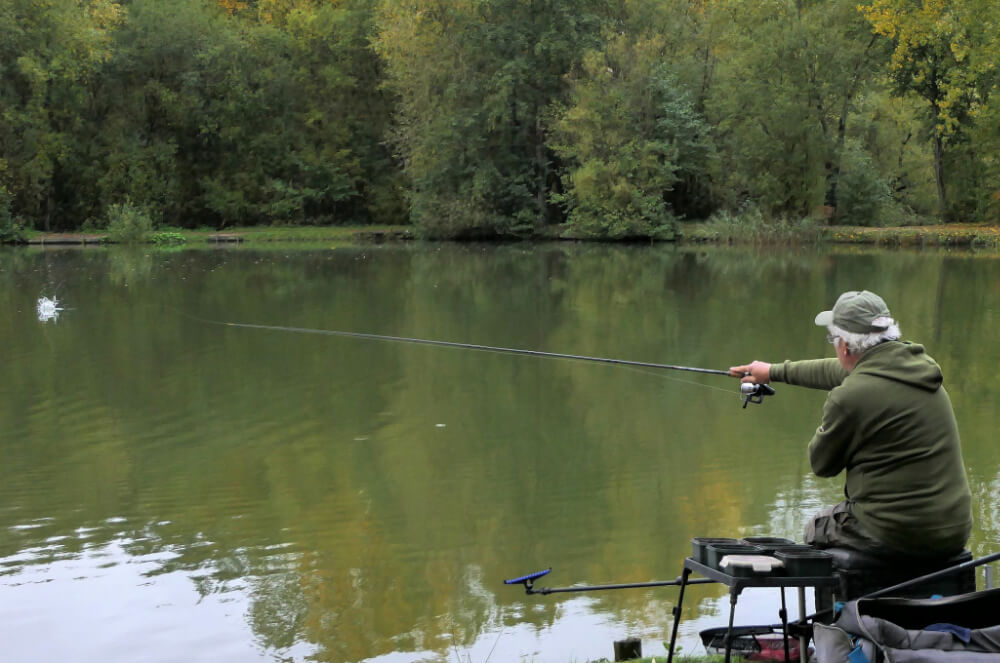
Pellet Designs
Although the pellet feeder concept had been around a long time, it was only when newer quick-release models evolved when I became more intrigued. I quickly discovered if you loaded these with micro pellets and cast out regularly, not just carp but all sorts of other species turned up. As you can see here, I modified much of my collection with even bigger openings, which I could more easily compress feed and my hook bait into. The faster the contents spilled out, the speedier I caught. Fish were fighting over free helpings of micro pellets. It didn’t really matter if maggots, bigger banded pellets or wafters were used on the hook. Compact sizes of these feeders proved ideal for many skimmers and even bigger bream, combining them with short quivertip blanks. Cadence CR10 10ft and 11ft Feeder Rods are perfect for this type of fishing.
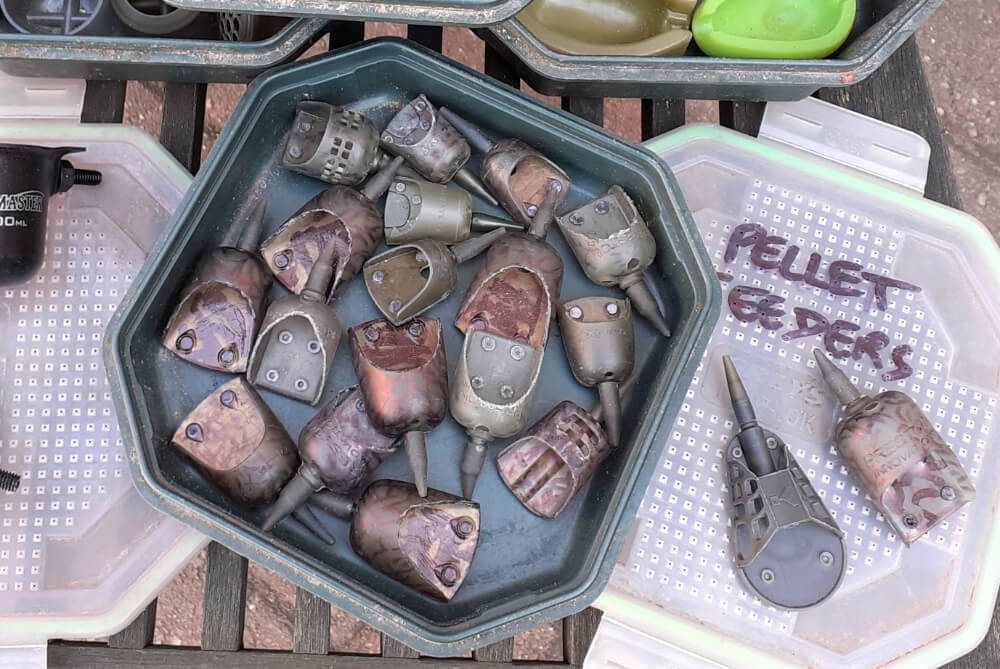
Groundbait Routes
In more recent times, Edge Tackle has introduced their popular Plastic Cage and Groundbait Feeders. These offer choices of releasing the contents fast with the cage model, or getting loadings hard on the bottom with the less perforated design. I often switch about, using the quick release option to get things moving, then a more controlled groundbait route to concentrate fish more tightly. I might stay with the cage if soft feed proves better to conjure up bites, changing to a tighter, more binding groundbait feeder approach to beat small fish. Active mixes work better with cage feeders, helping to release their loadings almost instantly in shallow water, or on the way down in deeper swims. More binding mixes are better with groundbait feeders, keeping everything more controlled for attracting bigger species.
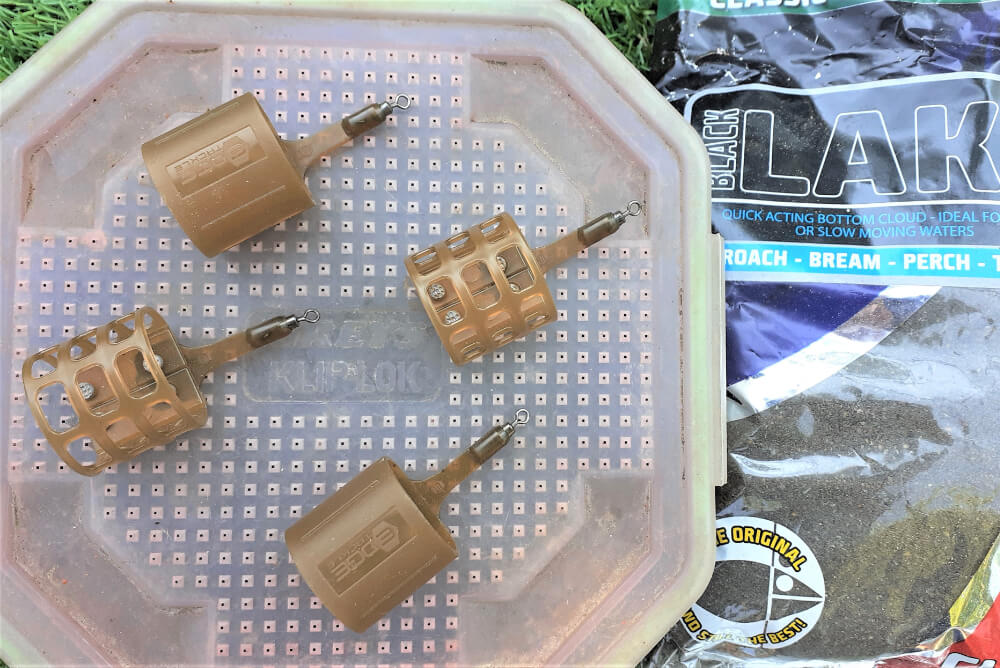
Making it Happen
The secret of success with feeder fishing is not to drift into becoming inactive, particularly if proceedings are slow. It’s far better to keep working at stirring up a reaction. This might entail more regular casting to create interest or twitching the rig if there was no initial response. Sometimes, if lethargic fish see the hook bait move, they will instinctively grab it. Another way of inducing takes, after early success tails off, is to try buoyant baits like floating maggots or wafters. This is a top way of fooling wary fish that tend to be extra picky. A slower sinking grub on a long hook length often attracts immediate interest, especially later in sessions. Similar applies to buoyant wafters, which lift off the bottom in an enticing manner when disturbed, often provoking a savage response. Constantly trying things is more effective than idly waiting.
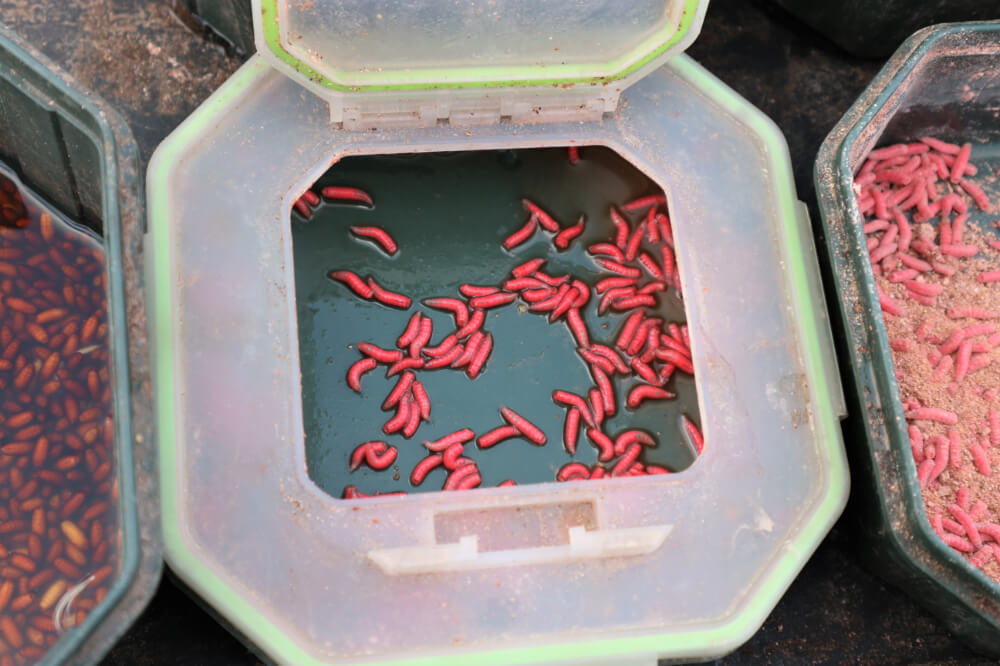
Being Stealthy
Close attention to detail improves success with any type of feeder, whether cast near or far. Keeping things simple is helpful to avoid tangles, but once a rig gets where it’s wanted, it will be more effective if it blends in with its surroundings. I particularly like the subdued look of Edge Plastic Cage and Groundbait Feeders. They tie in perfectly with their contents and the terrain, with no fear of spooking shy fish. This is much better than hoping over-shiny or brightly coloured swim feeders will be okay. Other end tackle is just as crucial. Using toned down rig bits, rather than over-bright gear, makes sense. That’s why Edge Tackle Line Stops, barrel swivels, hooked snap links, link swivels, swivel snap links, quick change swivels and rig rings are all black. This can be taken a stage further by using Teflon or black nickel coated hooks, rather than super shiny ones.
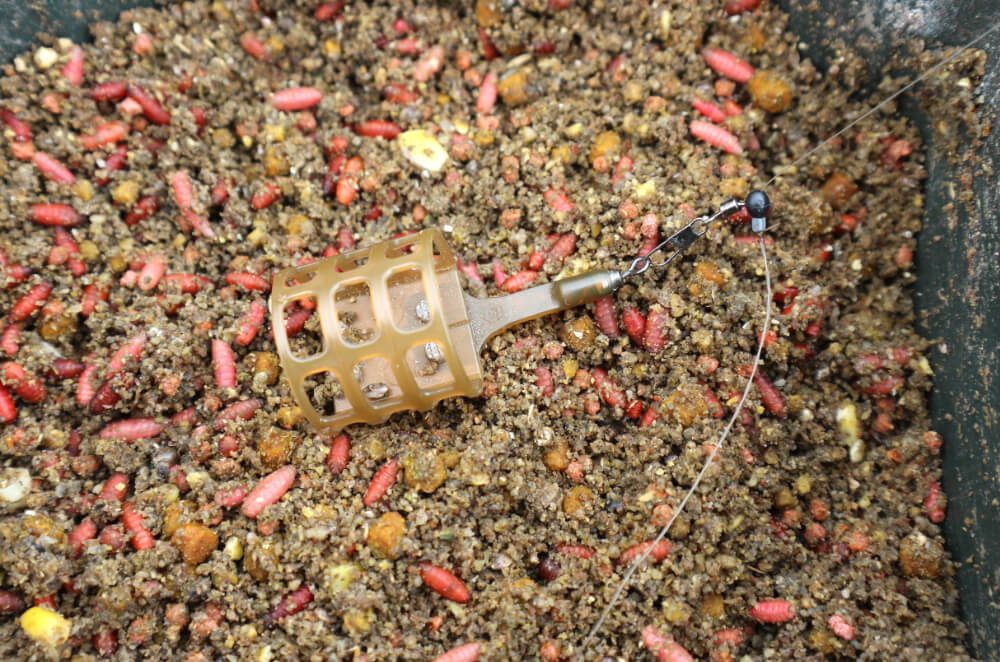
Fast Escape
You might think something simple like a blockend feeder only needs perforations for its contents to escape, but that’s not necessarily the case. The size and positioning of the holes is crucial, otherwise maggots or anything else you put in won’t come out cleanly. In running water, loadings tend to wash out of just about anything peppered with big enough holes. However, the way to find what’s really happening is to use blockends in stillwater, where I utilise them with helicopter rigs. This highly effective method requires a quick escape of maggots to attract interest, but some models keep coming back full of bait. This is no good because free stuff gets spread all over the place. The best quick release designs are Kamasan Black Caps or Drennan Carp Maggot Feeders, both highly effective when used with short swivelling hook lengths.
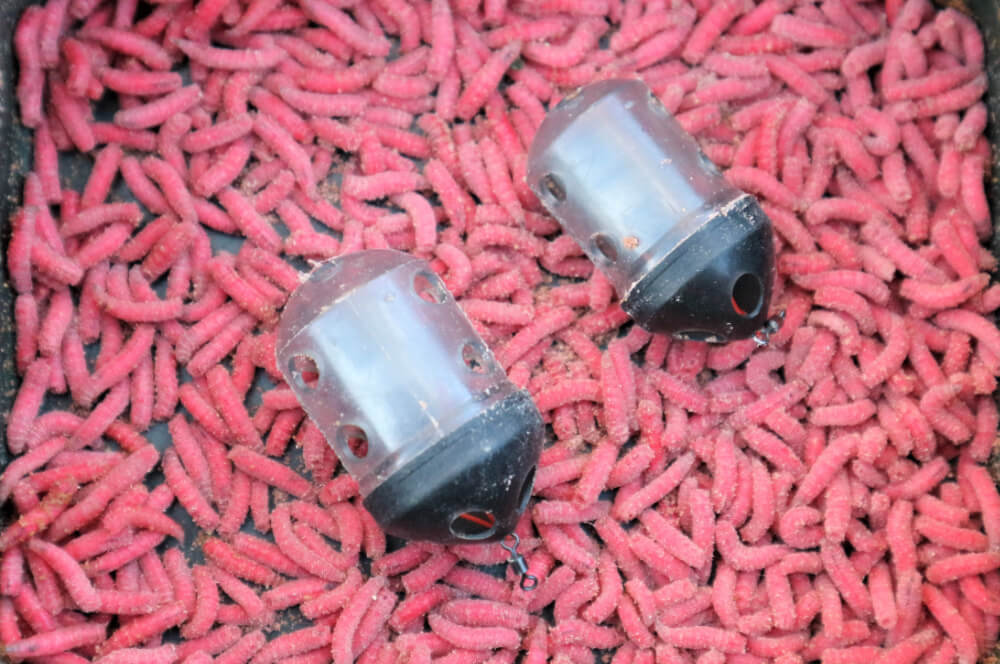
Clever Rigging
I often tone down feeders with a black waterproof felt tip pen, particularly on pressurised venues, where I believe fish back away from anything that stands out. As mentioned previously, apart from Black Caps, these Carp Maggot Feeders are superb for helicopter rigs. They have interchangeable base weights and cast out accurately. Using a short rotating hook length puts the hook bait right where maggots escape, which is highly productive for cold water roach, perch, skimmers and hybrids. I use a free-running swivel bead a couple of inches above the feeder, stopped with two small Stotz below and one only lightly nipped on the main line above. The latter is important because it will move easily when fish knock against the feeder on the way in, helping to prevent hook pulls. A short 5 inch Edge Tackle Fluorocarbon hook length completes the rig.
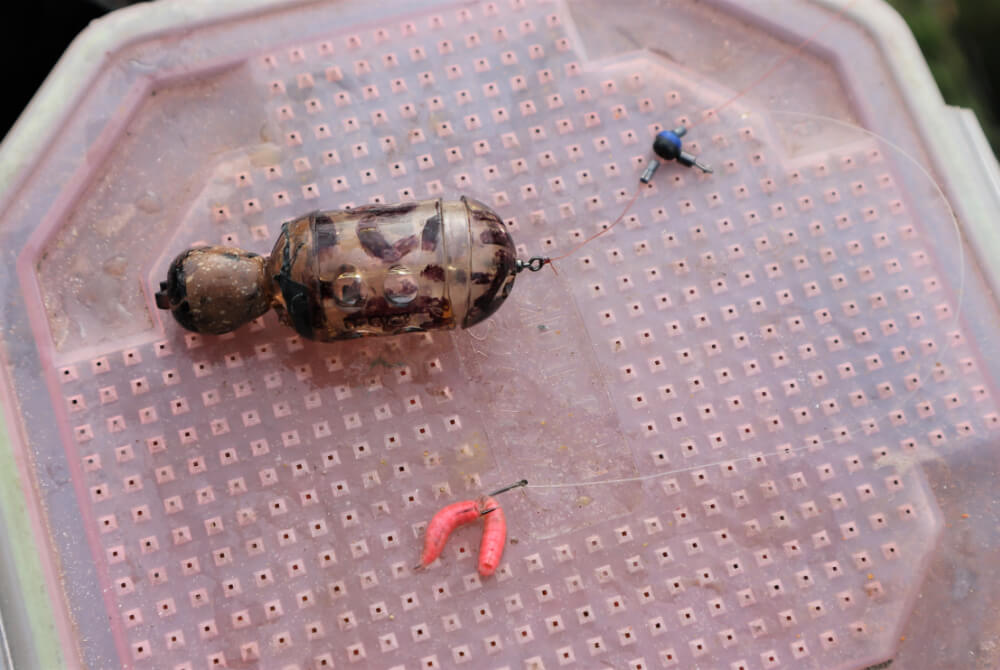
More Trickery
I find most pellet feeders too heavy for my requirements when fishing at short range, so I make my own by converting small and light maggot designs. I only want a pinch of micro pellets to induce interest when the going is likely to be hard. I also don’t need a load of lead for a bolt rig effect when casting short range. 10g to 15g is ample enough, where taking fish still nearly pull my CR10 10ft or 11ft Feeder Rods off their rest. I make a hole in the leading end after cutting and sanding a blockend into the right shape, threading the main line through and tying it to a small connector bead. Short 5 inch Edge Tackle Fluorocarbon hook lengths are attached to this, creating a simple rig. Most people use 4 inch hook lengths for this method, but after much trial and error, I discovered adding an extra inch makes a huge difference in helping to avoid bumped fish.
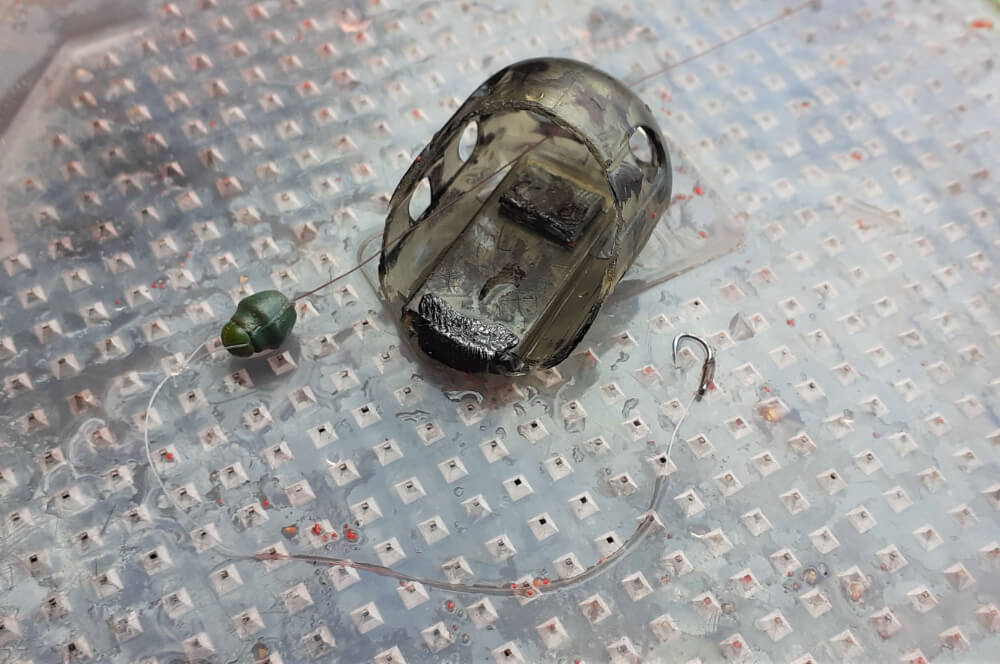
Getting Attached
A good way of setting up is with a free running feeder bead. The latter allows quick changes of feeder types and sizes, also switching to a leger weight. A small micro shot is positioned below the feeder, set above a 4inch twisted boom, which has a size 12 or 14 Edge Swivel installed. The hook length is attached to this crucial component, which prevents line spin as the tackle is retrieved. The stiff boom is there to help kick the hook length away on the cast. Something I have noticed with feeder beads, is they don’t act as smoothly with light leger weights, so a switch to an Edge Link Swivel or Swivel Snap Link can prove better if you know a small bomb is going to come into play. It sometimes helps to rest having a feeder going in, which can eventually cause fish to back off. Less disturbance from a leger weight often brings back bites.
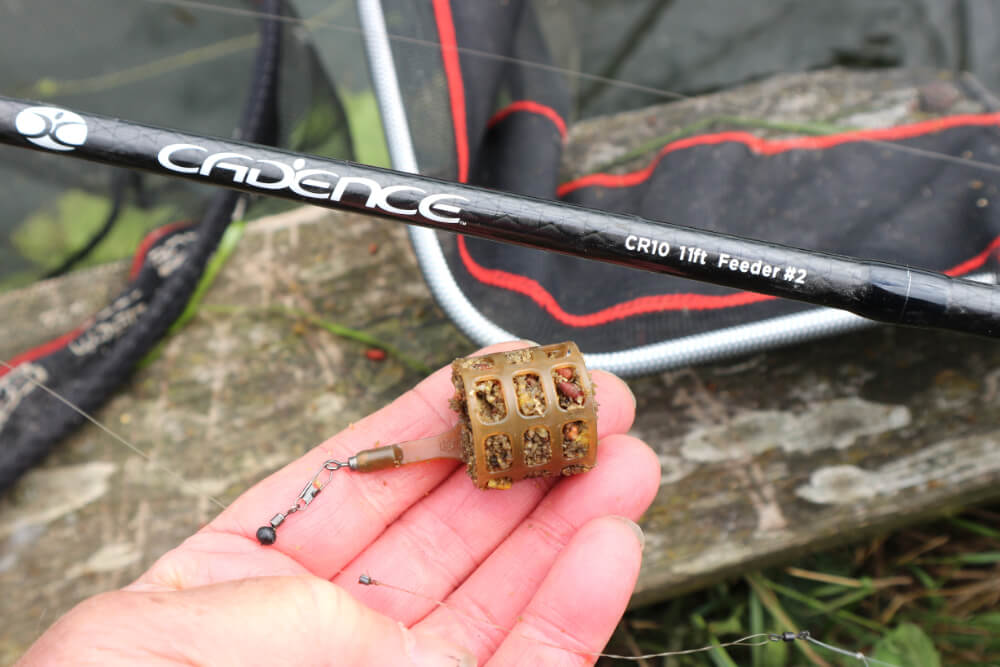
Cutting Down
When fish turn lethargic in winter, using short hook lengths and smaller feeders is a great way of waking them up. I’d much rather be casting lesser amounts regularly to induce interest, rather than crashing out big loadings that are probably not wanted in the first place. You can put grub in but can’t take it out as they say, so small, regular tempters normally prove more effective in cold weather. Groundbait and pellets might also be less productive in hard conditions, making a simple maggot approach worth a try. Using small blockends with helicopter set-ups can reveal a new world. Instead of sitting biteless on ice affected stillwaters, hoping normal methods will eventually work, a pint of maggots can prove far more lethal. I flavour mine with a dash of curry powder and turmeric, which pumps them up nicely, then enjoy watching a quivertip come to life.
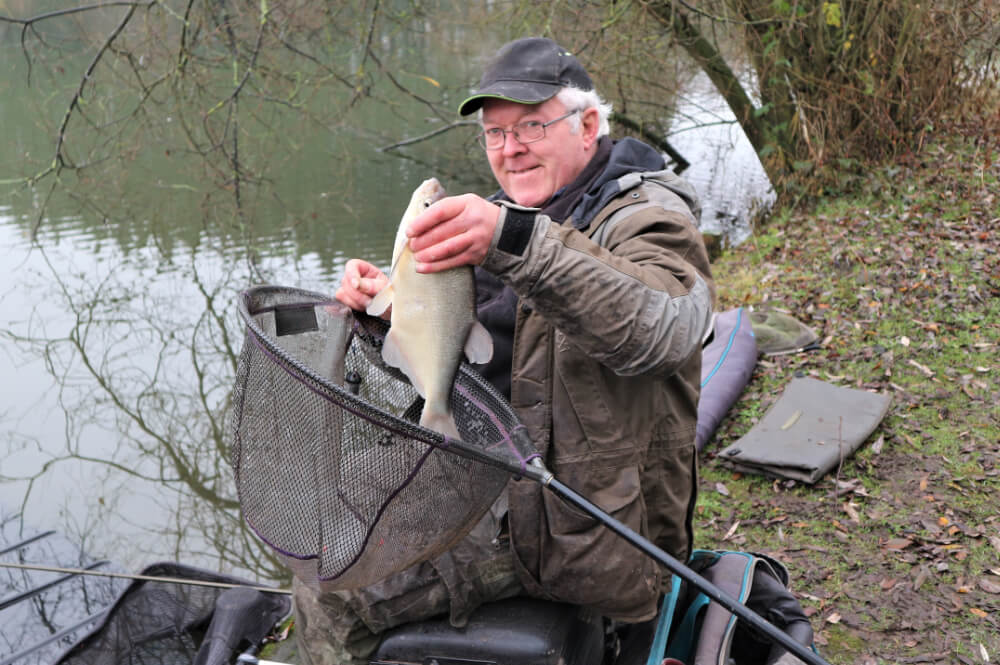
Method Madness
The frenzy method feeder fishing has created can confuse even experienced anglers. New designs crop up regularly, along with specialist moulds aimed at making them perform better. Finding something that works is down to trial and error. It can be a struggle getting feed the right consistency, so it stays on and doesn’t come adrift as it hits the water. I’ve also found some method designs over-complicated, causing buried hook baits to snag up in their vanes. Moulds can be problematical too if they are on the deep side, refusing to let compressed pellets or groundbait exit cleanly. My advice is to switch about to find feeders and moulds that tie in best with the type of pellet and groundbait you like using. What works for me might not for you, simply being down to bait consistency, different products and the way they are prepared.
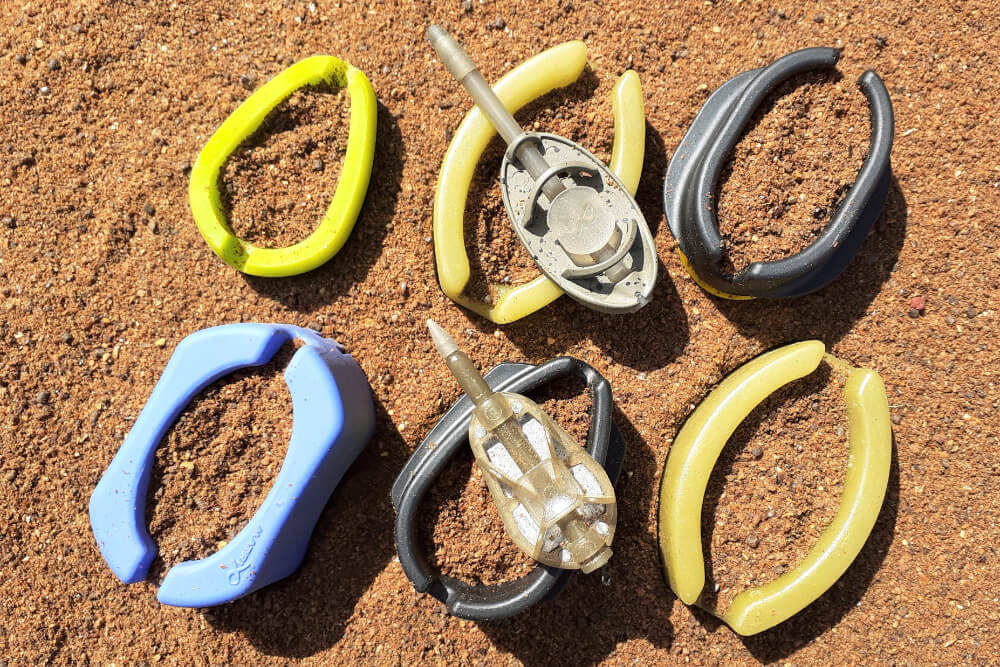
Feeder Extremes
What I like most about feeder fishing is the diversity it offers. Sometimes casting to the horizon is required, while on other occasions a gentle lob will be ample enough. Then there’s the wonderful array of different feeder types to consider, working out in your mind’s eye what you want their contents to do and how you imagine fish will respond. It’s a fascinating way of fishing, with countless variations to consider and try out. There will be times when long hook lengths are needed to gain attention from shy biters, while extremely short ones can be equally effective, particularly when fish are homing in as rigs settle. Getting it right is all part of the game, which can be as straightforward or complicated as you make it. Some sticklers now even use timers to calculate when to cast and retrieve, something I fully understand, but don’t yet do.
